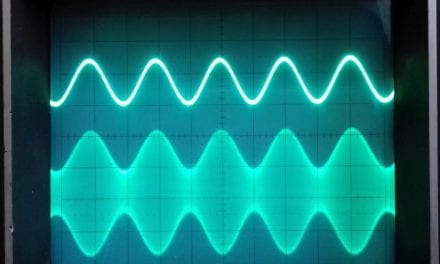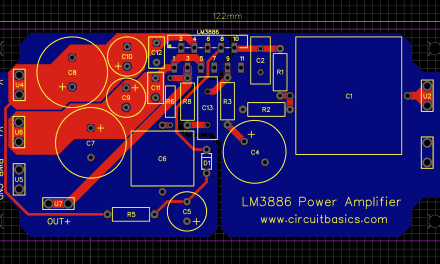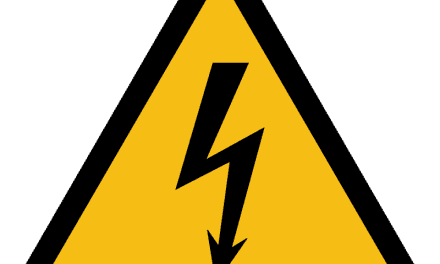“Failure of a single electronic sensor in a car during a crash can cause the airbags to not deploy on time. This can cause fatal injuries and even death.”
Electronic components are a vital part of our everyday lives, be it the car we drive, the IoT devices powering our smart homes, or industrial units. For example, a vehicle’s safety net functions on signals provided by numerous sensors. In case of a crash, these sensors will look to various parameters to decide the severity of the accident and instruct the onboard computer to deploy the airbags. All this happens within 15 and 30 milliseconds. Similarly, a malfunctioning IoT device due to a faulty sensor that monitors patients in hospitals and controls the supply of medicine can be fatal.
Even with advancements in electronic component testing, failures can happen. They may be traced back to inadequate testing during R&D, design faults, or insufficient manufacture testing. Electronic components need robust testing and maintenance mechanisms.
This article will help you understand:
- The trends in the electronic test equipment industry
- Applications of electronic test equipment
- Types of electronic test equipment that are a part of every engineers’ kitty
- General precautions and advisory while using electronic test equipment
Growth & Trends in Electronic Test Equipment
With the increasing complexity of electronic devices, the testing market is expected to reach USD 34 billion by 2025. Key industry players such as National Instruments (US), Keysight Technologies (US), Rohde & Schwarz (Germany), Viavi Solutions (US), Anritsu Corporation (Japan), and others are fast evolving their electronic testing products to keep up with the pace of evolving technology.
With emerging disruptive technologies such as 5G, the demand for RF test equipment will be high and the leaders in Test & Measurement (T&M) market are constantly upgrading their offerings to meet the demand.
This brings us to the importance and applications of electronic test equipment that fuels evolution and demand.
Importance and Applications of Electronic Test Equipment
Test equipment helps simulate the real-time environment as closely as possible so that the Device Under Test (DUT) can be verified. Essentially, testing equipment is as important as the device itself.
All electronic equipment tends to wear out over time due to heating, moisture, shock, or vibration. This can lead to performance degradation. Therefore, every electronic testing facility needs to have the required equipment be it a simple multimeter or complex oscilloscope. Electronic testing is done in different phases of the product’s lifecycle. This includes:
- R&D testing
- Pre-sale testing
- Software testing
- OEM platform testing
- Industrial/ manufacturing testing
- Certification testing
The most common applications of electronic testing equipment include:
- Testing performance of the circuit and possible defects during the R&D phase.
- Identification of component level defects, broken circuits, overloading connections, and high resistances during manufacturing testing.
- Check the overall performance of the electronic device and verify it against the design specifications.
- Verification of basic electronic parameters such as voltage, current, resistance, conductance, and capacitance. This could be applicable both in the design phase and day-to-day maintenance of the device.
Types of Electronic Test Equipment
- Digital multimeter – This is the most versatile kind of testing device. It is used to measure current, voltage, resistance, and various other parameters of a circuit. Digital multimeters can also be used to test continuity between two points in an electronic circuit.
- Solenoid voltage tester – These are also known as ‘wiggies’, and are used to test AC and DC voltages between 100 and 600 volts. This inexpensive tool has low impedance and can trip Ground Fault Circuit Interrupter (GFCI) devices during testing.
- Digital oscilloscope – Oscilloscopes help in converting non-electrical vibrations or sounds into a 2-D waveform as a function of time. The waveform thus obtained can be studied for frequency, amplitude, and time interval.
- Logic analyzer – This may be used to test complex digital and logic circuits and display the relative timing of a large number of signals.
- Signal generator – This is used primarily in the R&D and manufacturing stage to generate electronic or analog signals in the test environment. It helps engineers test the performance of DUT as if it was working live.
- Network/impedance analyzer – This is used to test complex impedance as a function of frequency. It helps characterize electronic components, electronic circuits, and materials used to make circuits.
- AC/DC power supply – This acts as a regulated AC/ DC power source for bench testing of electronic circuits. The main function of a power source is to convert domestic power sources into specific voltages and currents.
- LAN cable tester – This helps measure conductance between two ends of a cable. They can be used to test a wide range of LAN cables including RJ45, coaxial cables, and other cables of different CAT ratings. For example, specialized cable testers Fluke DTX 1800 can certify CAT 6 link three times faster with Level IV accuracy. Common tests on LAN cables include length, wiremap, attenuation, NEXT, DC loop resistance, and return loss.
- Digital pattern generator – This is used to artificially simulate electronic waveforms between two voltage levels which can be compared to the DUT’s I/O standards – TTL, LVTTL, and LVDS.
General Precautions When Working with Test Equipment
Electronic test equipment, if not used properly can lead to fatal accidents in the laboratory. It can also lead to incorrect test output which can cause the product to fail in the production environment.
It is important to have guidelines and regular training for the team to be well versed with the precautions needed while operating electronic test equipment. Some recommended precautions include:
- It is imperative to use the right test equipment within the range of parameters defined by the manufacturer.
- The engineer should be qualified to use the equipment and should have attended a training session by the manufacturer in case of specialized testing equipment.
- Individuals should use the appropriate Personal Protective Equipment (PPE) while using the test equipment on live circuits.
- As a general rule, the engineer should visually inspect the testing equipment for any defects or breakage in the body and test leads.
“Correct usage and knowledge aren’t enough unless the test equipment complies with the international standards of safety.”
- The test equipment should be of the relevant CAT rating for the safety of the engineer and the device under test. All test equipment is required to display a compliance certificate with its validity. Agencies such as Underwriters Laboratory (UL), Canadian Standards Association (CSA), Conformité Européenne (CE), ETL, and TÜV Rheinland provide independent verification and certification services which are recognized globally.
Conclusion
Electronic circuits are set to get more complex, be it a simple home appliance or advanced space technology. It is important to keep up to speed with the upgrades in testing technology, and the right way to use it to ensure safety.
We can safely conclude that it is important to:
- Use the test equipment that conforms to safety standards.
- Make the testing environment safer by adopting safety guidelines and regular training.
- Using the right equipment that is up to date.
- Have the test environment conform to Standard Operating Procedures (SOPs) that are updated at regular intervals.
With time, electronic testing has become more sophisticated. At the same time, if we can save that one extra life in a lab or in a car that just met an accident, it will make all the difference.










